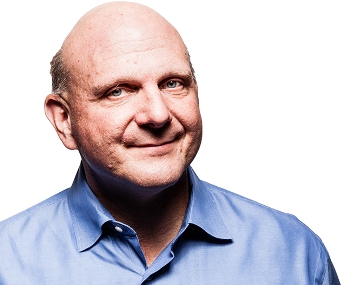Remember the days when the U.S. Department of Justice and Federal Trade Commission tried to break Microsoft into one or more companies? Well, Microsoft kind of did this on its own by buying companies, launching new businesses, and giving each their own quasi-independent units.
All the while critics doubted CEO Steve Ballmer’s vision chops and his very future with the company.
Well, during the recent reorg, Ballmer turned both of these concerns on their head. He centralized Microsoft’s structure and, in doing so, re-centralized his authority.
Microsoft five business units — Windows, Server and Tools, Microsoft Business Division, Entertainment and Devices and Online Services — are all essentially dismantled.
This reorg is not off to a rocking start, as yesterday Microsoft missed its expected numbers, an event nearly as rare as Haley’s Comet.
The company reported increased revenues for the fourth quarter, nearly $20 billion, but analysts expected the company to bring in closer to $21 billion. Despite letting down analysts, the numbers were good, up some 10% compared to a year ago. While business was generally good, Surface was a disappointment. In fact, Microsoft recently cut prices for the device by $150.

Microsoft CEO Steve Balmer
The Redmond Shuffle
There are now four major groups that reflect Microsoft priorities – Operating Systems, Applications and Services, Cloud and Datacenter, and Devices and Studios. The first two sound like Microsoft from the 1980’s, while the latter two set the company up for the next decade.
Four executives are running each of these shows, but they don’t matter nearly as much as Mr. Ballmer, who is clearly backed by nearly life-long friend Bill Gates, remains Chairman and is still the epitome of all things Microsoft. If you think that Gates can’t save the world and direct Microsoft at a high level at the same time, you don’t understand Bill’s true bandwidth.
And if you think this is all just so much office politics, it’s not. The new structure focuses on the notion of ‘One Microsoft’, a unified company that works off unified goals. And in years to come, as the cloud and mobile and new interfaces take hold, this approach should bear fruit.
One Microsoft is not exactly new – it just now has a formal structure to enforce the notion.
This reporter first heard the idea while Editor-in-Chief of Redmond magazine. “Inside Microsoft there's an effort to present a single technical and business image. The idea, which drives the partner- and marketing-focused One Microsoft program, is it's better for employees, customers and partners to do business with a unified company than a bunch of siloed units, each acting on its own behalf,” wrote Microsoft watcher Mary Jo Foley in May of 2012 for Redmond.
Cloud or Devices and Services?
The reorg is, in part, aimed at presenting a single face of Microsoft to the world and to have a more unified internal strategy. And a big part of that plan revolves around devices and services.
Devices mean Xbox, Surface and, at some point, possibly a Microsoft-built phone. Services largely means the cloud, which today largely means Office 365, Azure and all the sundry consumer Web offerings.
The devices side is really Microsoft trying to be more like Apple, which has done insanely well with the iPhone and iPad.
Ballmer explained the devices strategy in a letter to employees. “About a year ago, we embarked on a new strategy to realize our vision, opening the devices and services chapter for Microsoft. We made important strides — launching Windows 8 and Surface, moving to continuous product cycles, bringing a consistent user interface to PCs, tablets, phones and Xbox — but we have much more to do,” he wrote. “Going forward, our strategy will focus on creating a family of devices and services for individuals and businesses that empower people around the globe at home, at work and on the go, for the activities they value most.”
The services side is simply Microsoft seeing where software is heading and wanting to stay ahead of the curve.
While the reorg is really all about Mr. Ballmer asserting his vision, a few other execs are rising to the top.
Terry Myerson is in charge of operating systems. Qi Lu will now run Applications and Services, and controls Office, SharePoint, and Bing. Satya Nadella, a Microsoft vet, runs Cloud and Datacenter. The big rising star is Julie Larson-Green, who manages Devices and Studios, and is responsible for hardware.
One interesting note – there are no longer separate business and consumer divisions. BYOD and the consumerization of IT means they are no longer necessary.
Edited by
Ryan Sartor